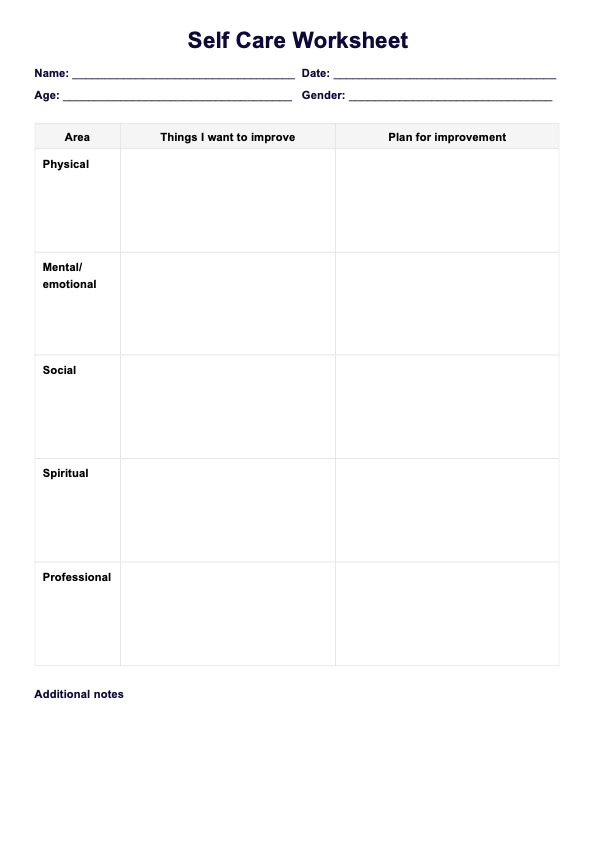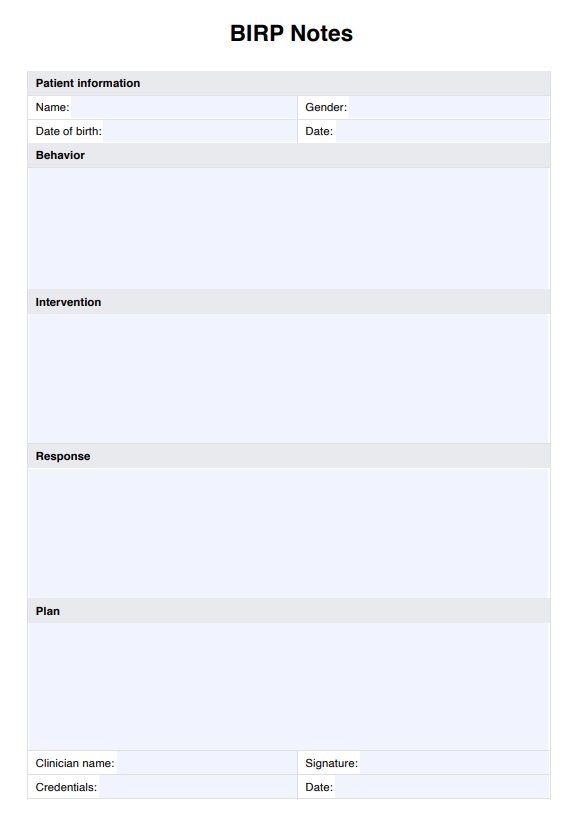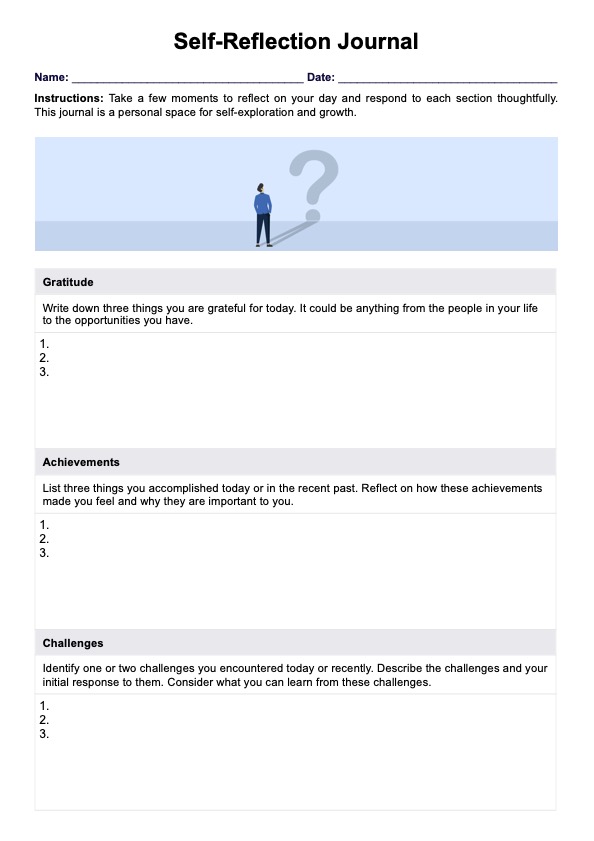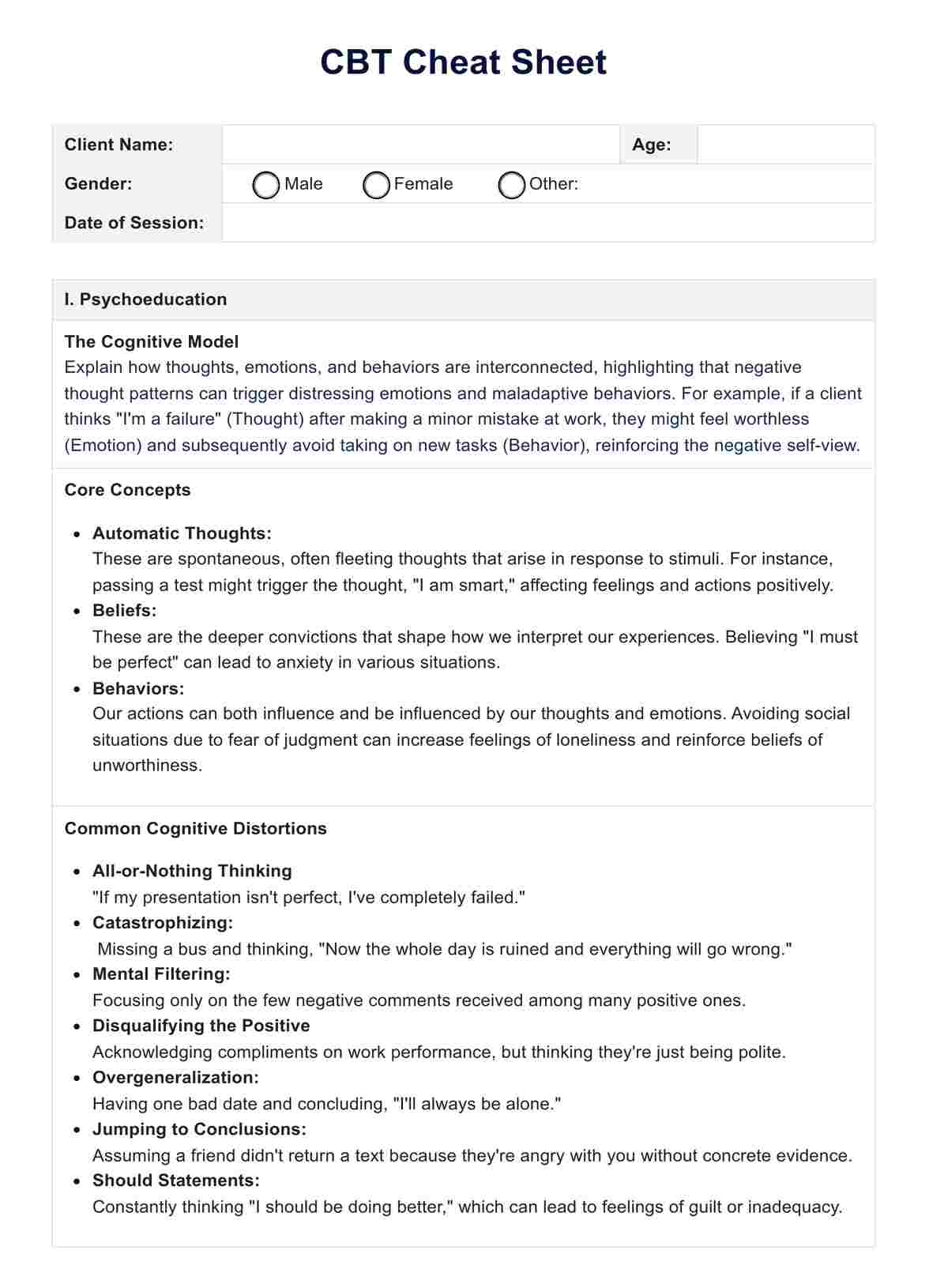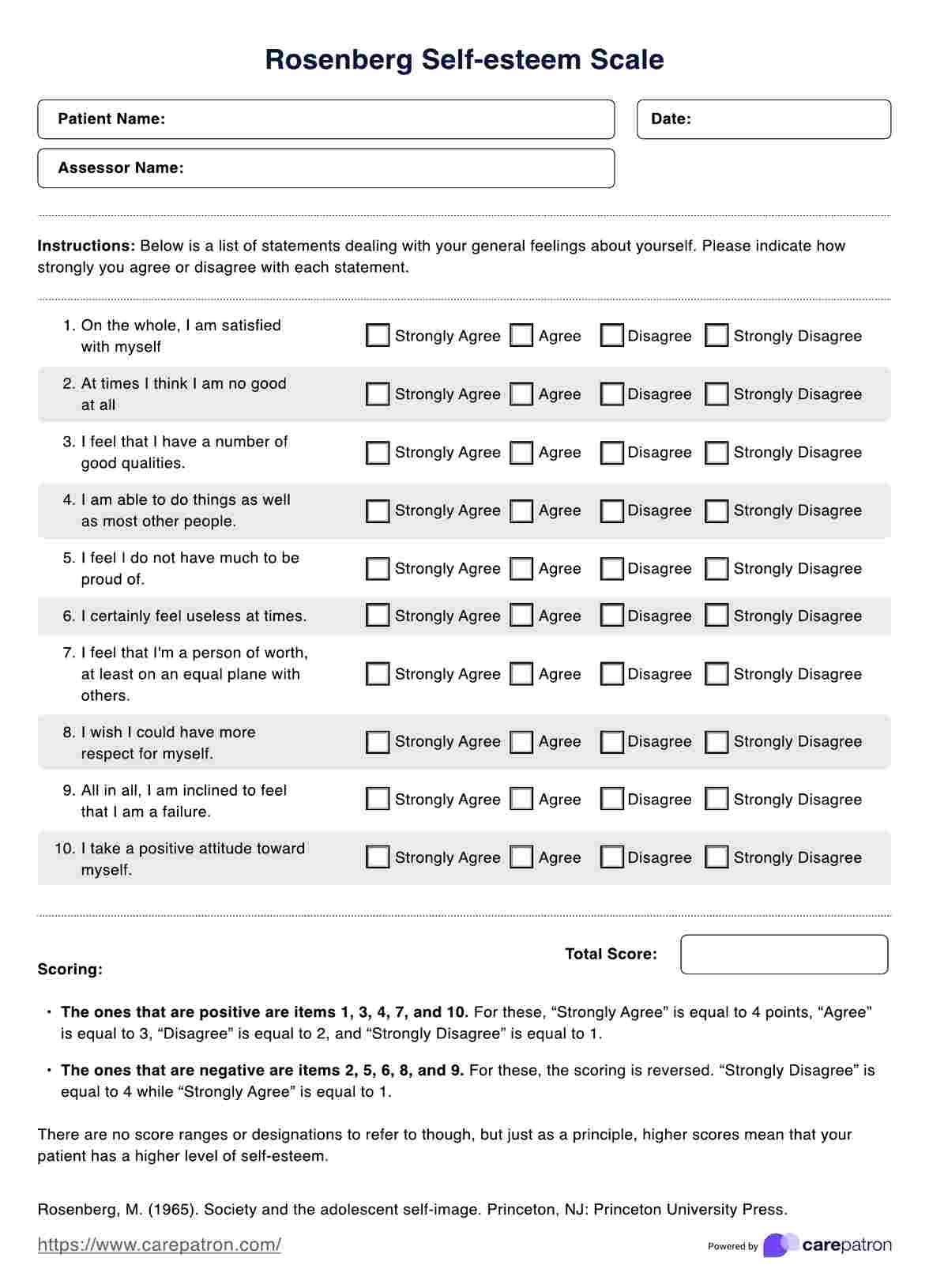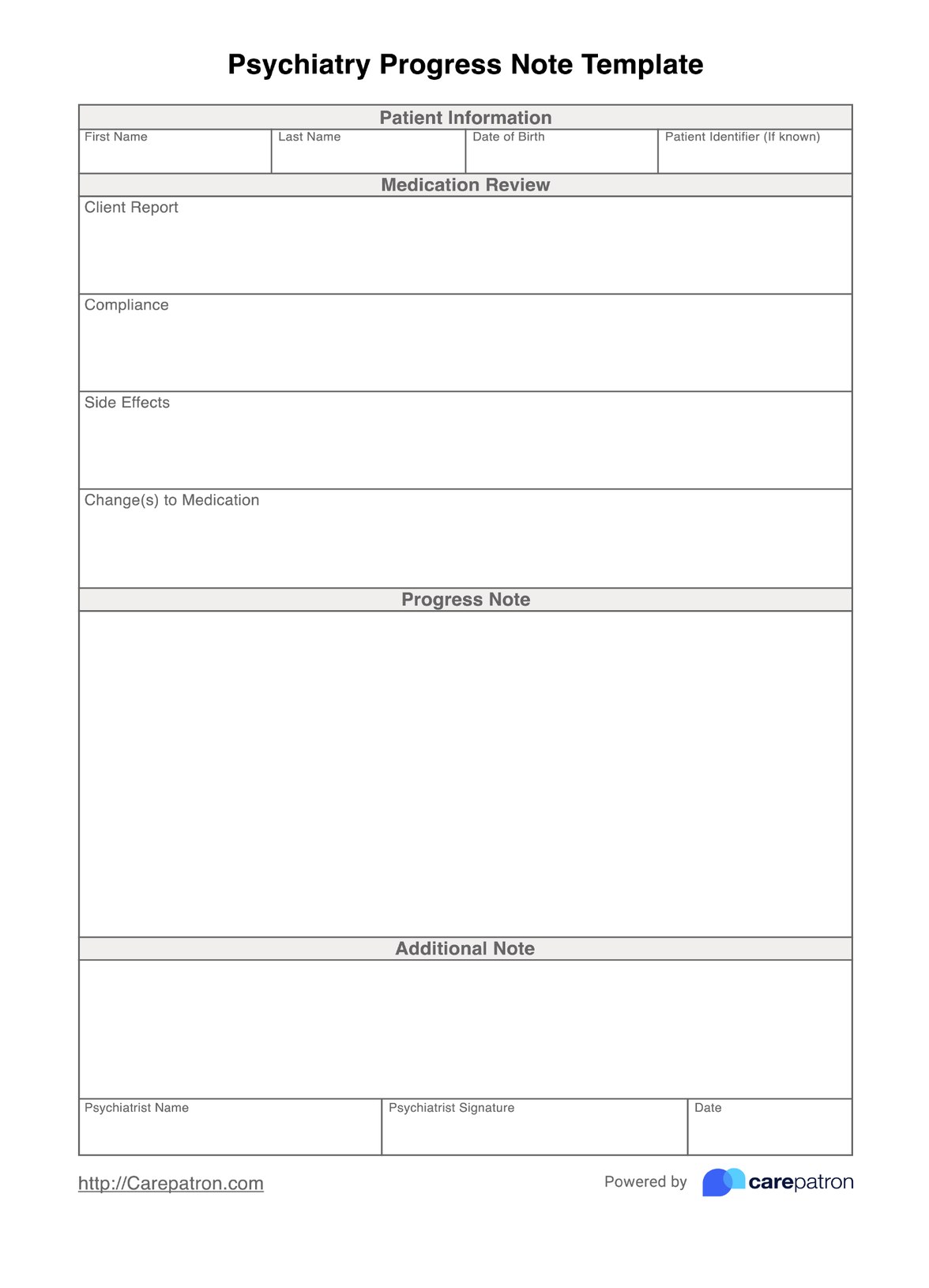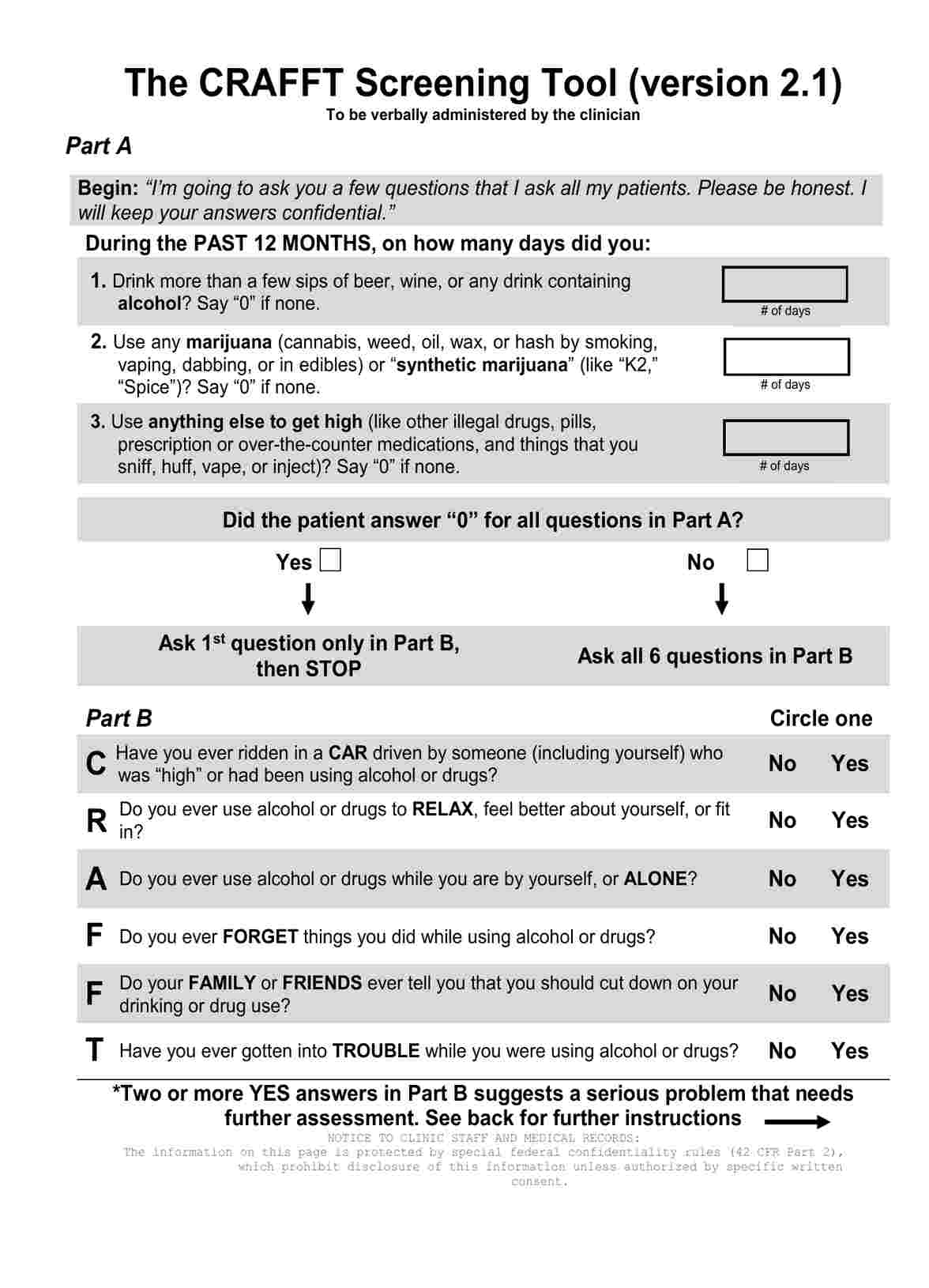ACT Values Worksheet
Use this ACT values worksheet to help your client identify their problems and set realistic goals that will help them move past their troubles and live better lives!


What is an ACT Values Worksheet?
ACT stands for “Acceptance and Commitment Therapy.” It is a type of psychotherapy that seeks to identify a person’s problems along with the unhealthy thoughts and behaviors that are rooted in said problems, as well as create actionable steps in order for the person to work through these problems and hopefully live better lives where their mental state is in a much better place.
ACT Values Worksheets were created to help identify a person’s problems and to encourage goal setting. Many of these resources foster engagement with people by having them write down their problems and goals. By having them do so, people are able to sit down and examine themselves. Identifying problems can lead to accepting them, and accepting them allows people to start thinking about what they can do to move past them.
Here at Carepatron, we have the My Problems, My Values, and Setting Goals ACT Values Worksheet, which should help a person do all of that!
ACT Values Worksheet Template
ACT Values Worksheet Example
How to use this ACT Values Worksheet?
On the part of the psychologist/therapist, they just need to issue this worksheet to their client. Ideally, this will happen when the client is at the stage in their sessions/treatments where a game plan is required in order to help them work past their troubles.
On the part of the client, they just need to answer some guide questions. These questions should help them articulate what they want to say as descriptively as possible, especially if they’ve had trouble doing so during face-to-face or online appointments with their therapist.
Step 1: Indicate their problems.
The first thing that a client has to do is to take a step back and really think about and identify their problems. This is the section where they can state their troubles outright and describe them.
Step 2: Indicate problematic thoughts and behavior rooted in their problem(s).
Aside from identifying their problems, they are also going to have to think about any problematic thoughts they might have and any changes in their behavior that are rooted in their problems.
This section should help with having the client come to realize the severity of their problems and how they have impacted their life negatively. By acknowledging and accepting these, this section opens up the opportunity to look towards a better future and encourage goal-setting.
Step 3: Indicate their values.
This is the part where a client can indicate the beliefs they hold dear. Examples include family, love, success, wealth, good health, creativity, fun, etc. Identifying these should help the client reflect on what aspects of their life need more attention and what aspects of their life they should maintain. Doing so can help influence what the client will write in the next section.
Step 4: Indicate their goals and what they can do to achieve them.
The last thing that a client needs to do is to indicate their goals based on what they value most in life, and then write down the actionable steps or objectives that they need to meet in order to accomplish those goals. Whether they are “small” or “big,” the client should indicate them.
Once the client submits this worksheet to their therapist, the therapist should focus on what they wrote as the subject for their next session. Doing so will help them draw up a plan for their client to follow in order to help them work through their problems in a healthy manner.
Who can use this printable ACT values worksheet?
The following healthcare professionals can use this free printable worksheet for their practices:
- Psychotherapists
- Clinical psychologists
- Psychiatrists
- Counselors
- (Mental health) Therapists
While these healthcare professionals can integrate this worksheet into their practices, the people who will engage with it the most are their clients since they will be writing about their problems, values, and the goals they want to achieve. ACT therapy can be fairly flexible, meaning that clients can receive this therapeutic treatment for a range of different reasons, including the following:
- Anxiety
- Depression
- Chronic Pain
- Obsessive-Compulsive Disorder
- Grief
- Accepting Life Experiences
Why is this worksheet useful to therapists?
Therapists can better understand their clients’ problems and how they respond to them.
It’s normal for clients to have a hard time opening up to their therapists. Sometimes, they find it difficult because they struggle to articulate themselves through conversation. ACT values worksheets, including this one, help clients better explain themselves through writing.
Therapists can help develop a battle plan to help clients power through their problems!
Parts of this worksheet ask the client to indicate and write their problems, how they respond to these problems, what they value, and what their goals are. It also encourages them to be as specific and descriptive as they possibly can be.
Therapists can use the information written by their clients to craft a game plan to help the clients work through their problems, set goals and the actionable steps to achieve them, and help them live life with a healthy mind and outlook.
.png)
What are the benefits of using this ACT Values Worksheet?
While this worksheet is useful for therapists, using it can also be beneficial for the clients themselves.
It creates the distance needed for clients to properly examine themselves.
Since part of ACT is having the clients identify, acknowledge, and confront their problems, having them write on this worksheet will help them do just that! Generally, worksheets that ask clients to engage with them through writing help create the distance needed between the clients and their problems, allowing them to properly identify and reflect on them.
Doing so helps them acknowledge and accept their problems. This, ideally, could help them find the determination needed to set goals and think of what they need in order to achieve them as well as work past their problems.
This could help clients connect with their therapists better.
As stated earlier, opening up to someone about your problems, especially to therapists (even when safe, no-judgment spaces are established), is normally something that’s hard to do. If it’s difficult for someone to articulate themselves through speech, it might be better to have them do so through writing, so this worksheet could help them do so.
By opening up through writing, what they wrote can be used by the therapist as discussion points for their next face-to-face or online session. If they decide to open up through writing, it might become easier for them to talk about things with their therapists next time.
Commonly asked questions
These are nifty interactive tools that therapists issue to clients in order to help them properly identify their problems, any unhealthy thoughts and behaviors they might have as a result of those problems, what they value in life, and what their goals are based on their values. It’ll serve as a bridge for the client and therapist to establish rapport as well as for the therapist to better understand how clients look at themselves.
ACT Values Worksheets are issued in order to help with goal setting. The time when this should be used will be up to the therapist, but depending on the client’s problems, earlier during the treatment plan might be better in order to establish actionable steps.
It’s also best not to pressure the client. ACT Values Worksheets were designed to help them think about themselves. Adding a time constraint might not work in anyone’s favor and could give unnecessary pressure and stress to the client.
Ideally, It shouldn’t be because there are guide questions/writing prompts to help frame what they should write. But of course, even with guide questions and writing prompts, clients might still have a hard time opening up since they are revealing things about themselves. This could make it difficult for them to write. As mentioned above, it’s best not to pressure the client into writing. Make sure you give them the time and space to write it, so it’s best to come to an agreement as to when they should or want to complete it.


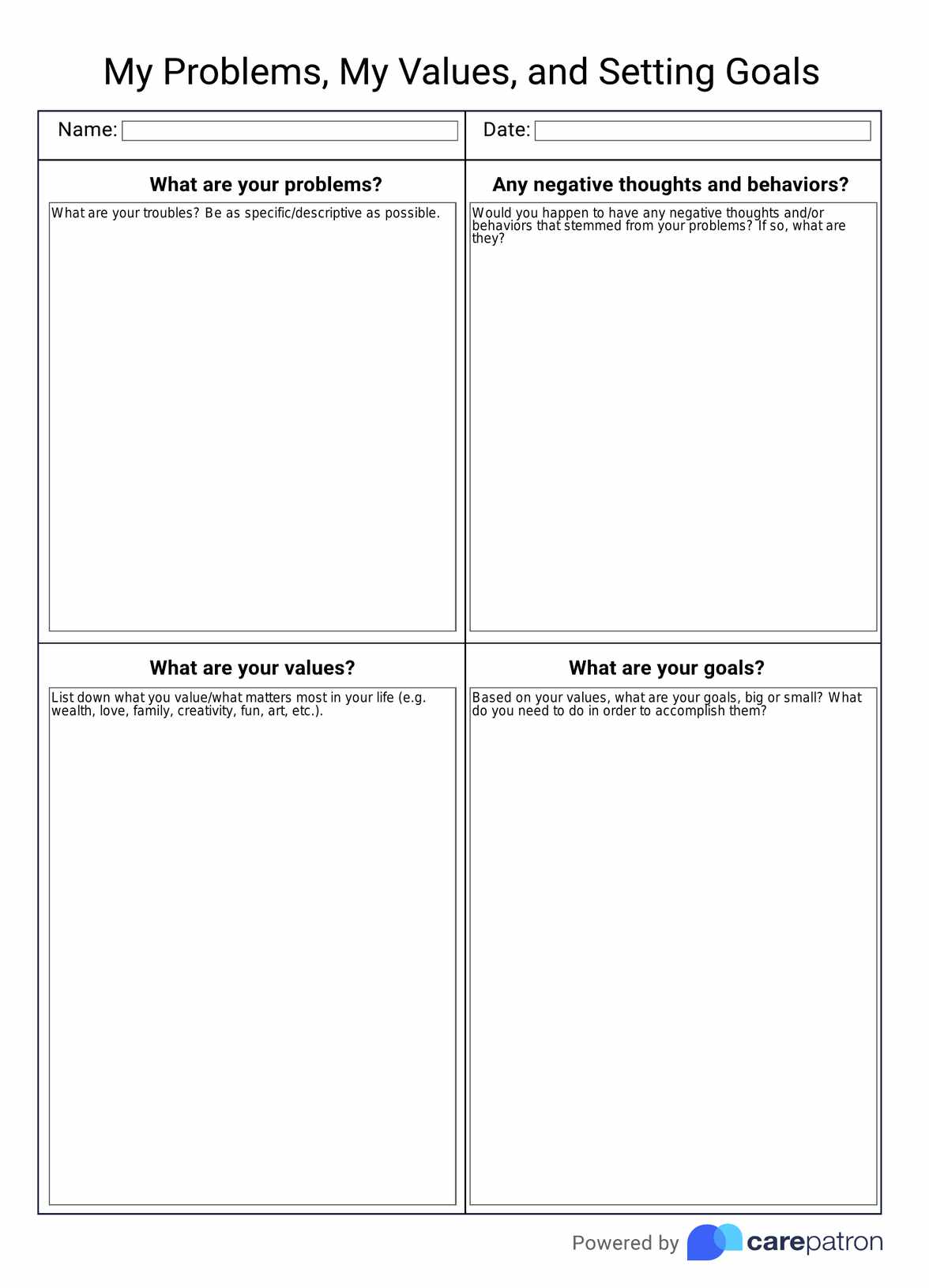
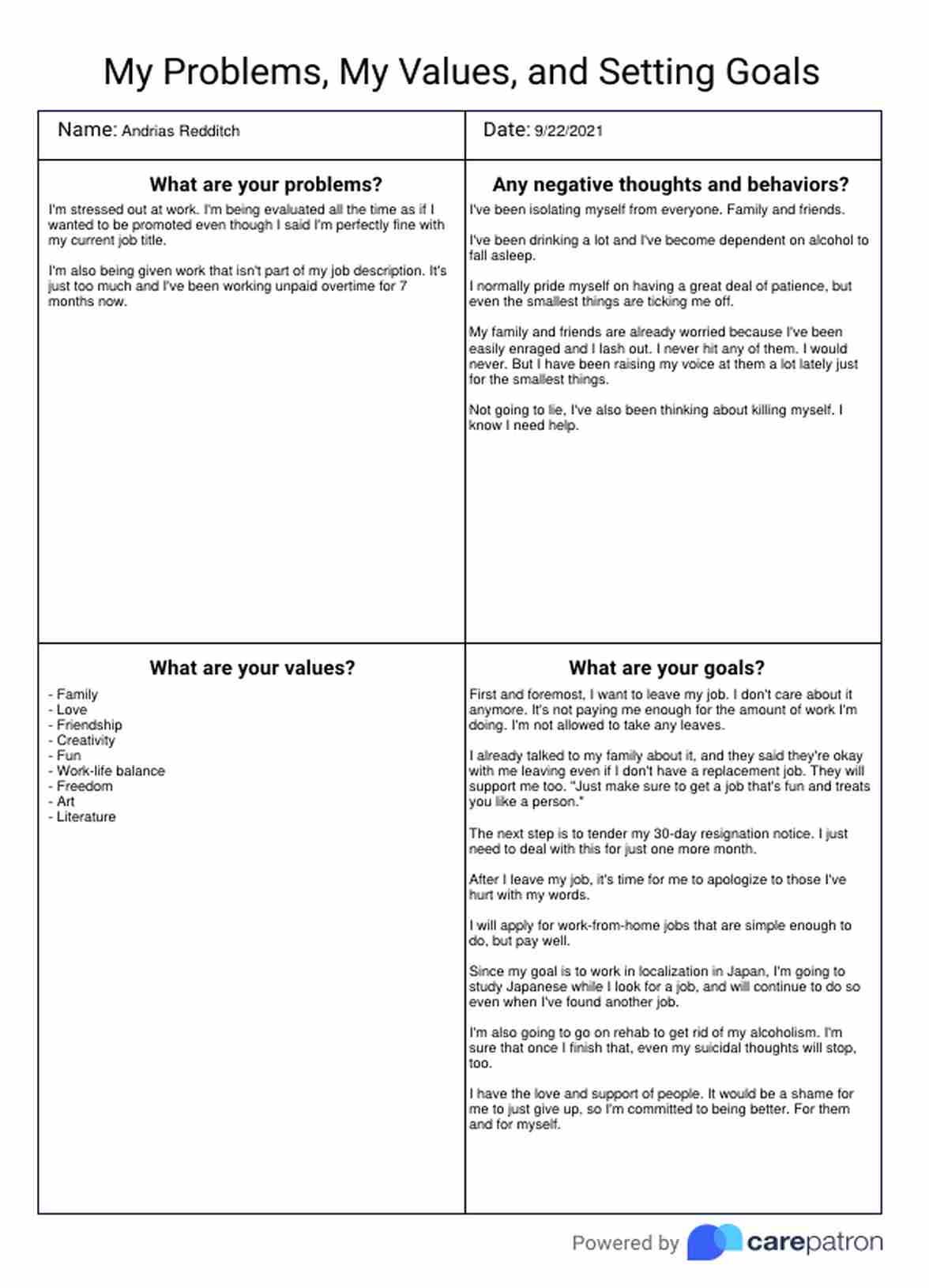


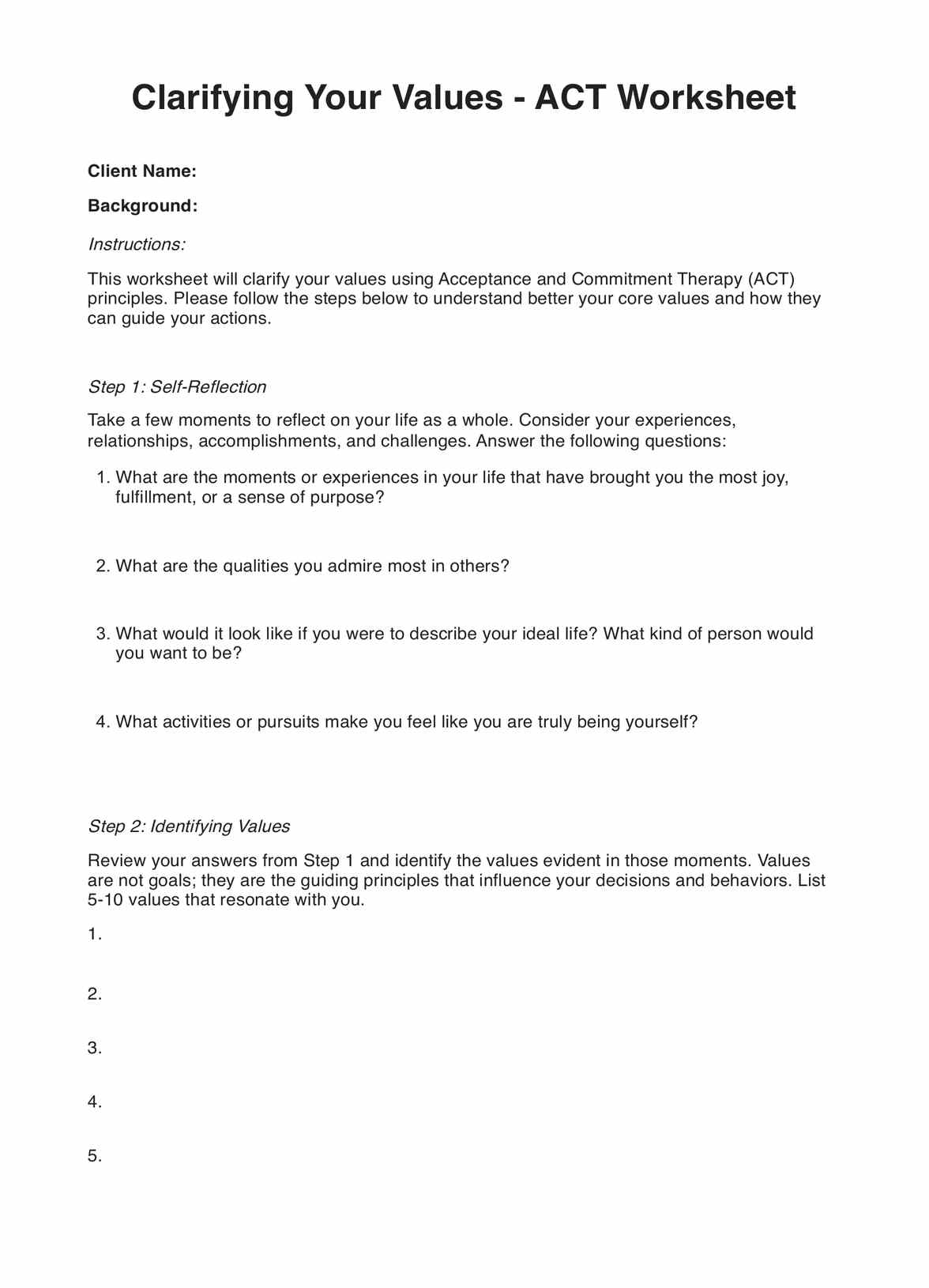














-template.jpg)





















































































